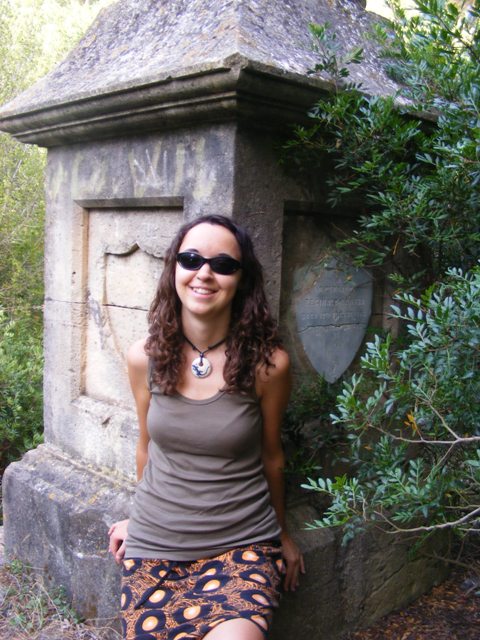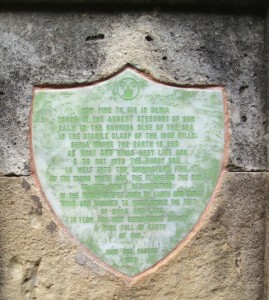Wherever there has been a British presence in Spain there is usually a British cemetery where many stories of Anglo-Spanish collaboration are to be found. 
Meeting somebody who is an authority on cemeteries, and British ones in Spain at that, can be a bit forbidding. And yet Agnès Vidal i Vicedo, authoress of ‘El Cementeri dels Anglesos (L’herència britànica a Dénia)’ is neither a vampire, nor an old lady obsessed with the life hereafter, nor even British; but a young philosophy graduate who came to the topic by accident, and as the result of a poem that mentioned the now abandoned British Cemetery of Denia.
Having read the poem, she visited the cemetery next to the Marineta Cassiana beach, and began to wonder at the incongruity of its existence and its state of abandonment. But above all she soon realised that a cemetery is nothing more than the final full stop at the end of the stories of those who are buried there, and it was the stories themselves that she wanted to discover, and to read backwards.
Her book is dedicated to the memory of Alexander Boyd Swan and Robert Rankin, two of the graveyard’s tenants, and Agnes’s researches have taken her beyond Denia to Newfoundland and the University of Lancaster in order to find key documents and photographs that tell their stories, as well as actually meeting their descendants.
 She also began to look at some of the various other British cemeteries around Spain, which date largely from the same epoch, the mid 19th century, when a royal decree finally permitted protestant resting places in Spain, and when British involvement in Spain in enterprises such as the export of raisins from Denia, or the building of the Gandia to Alcoy railway to ship imported British coal from the coast to the factories of Alcoy, was at its height.
She also began to look at some of the various other British cemeteries around Spain, which date largely from the same epoch, the mid 19th century, when a royal decree finally permitted protestant resting places in Spain, and when British involvement in Spain in enterprises such as the export of raisins from Denia, or the building of the Gandia to Alcoy railway to ship imported British coal from the coast to the factories of Alcoy, was at its height.
Agnès’s massive research job has resulted in a fascinating book, which shows how Denia’s growth was due largely to British trade and industry rather than tourism, although the trade came to a grinding halt during first the Civil War and then the Second World War and the inward-looking years of Franco’s dictatorship.
She tells the stories of the families whose members are buried in the cemetery, some tragically so such as Reginald Rankin, whose life lasted less than a year.
Of the original 13 tombs, only two now remain and so it was necessary to find old photographs, and the book is full of images of how Denia used to look.
There are also tales of children being kidnapped, of cholera epidemics and of the first football match played in Denia thanks to the British influence.
The book is a goldmine of information about the British presence in Denia, although it is currently only published in Catalan; however, Agnès informed us that Denia Council proposes to publish it in English. Hopefully the cemetery will still be there by that time.
 Agnès still sees descendants of those buried in the cemetery and has also researched the British Cemetery of Valencia, also closed to the public, as is the one in Tarragona, neglected by the British diplomatic service which is responsible for their upkeep, and which, to this date, has been unwilling or unable to provide any information about either, and seems to be largely unaware of their state of repair.
Agnès still sees descendants of those buried in the cemetery and has also researched the British Cemetery of Valencia, also closed to the public, as is the one in Tarragona, neglected by the British diplomatic service which is responsible for their upkeep, and which, to this date, has been unwilling or unable to provide any information about either, and seems to be largely unaware of their state of repair.
In fact, Agnès herself only managed to get into the cemetery in Valencia by accompanying a group of Boy Scouts who had volunteered to clean up the tombs. It would seem that gone are the days of heroic British Consuls riding across deserts and swimming rushing rivers, risking life and limb to protect and preserve Her Majesty’s subjects abroad; today they hide behind answer phones, anonymity and outrageous passport renewal prices.
